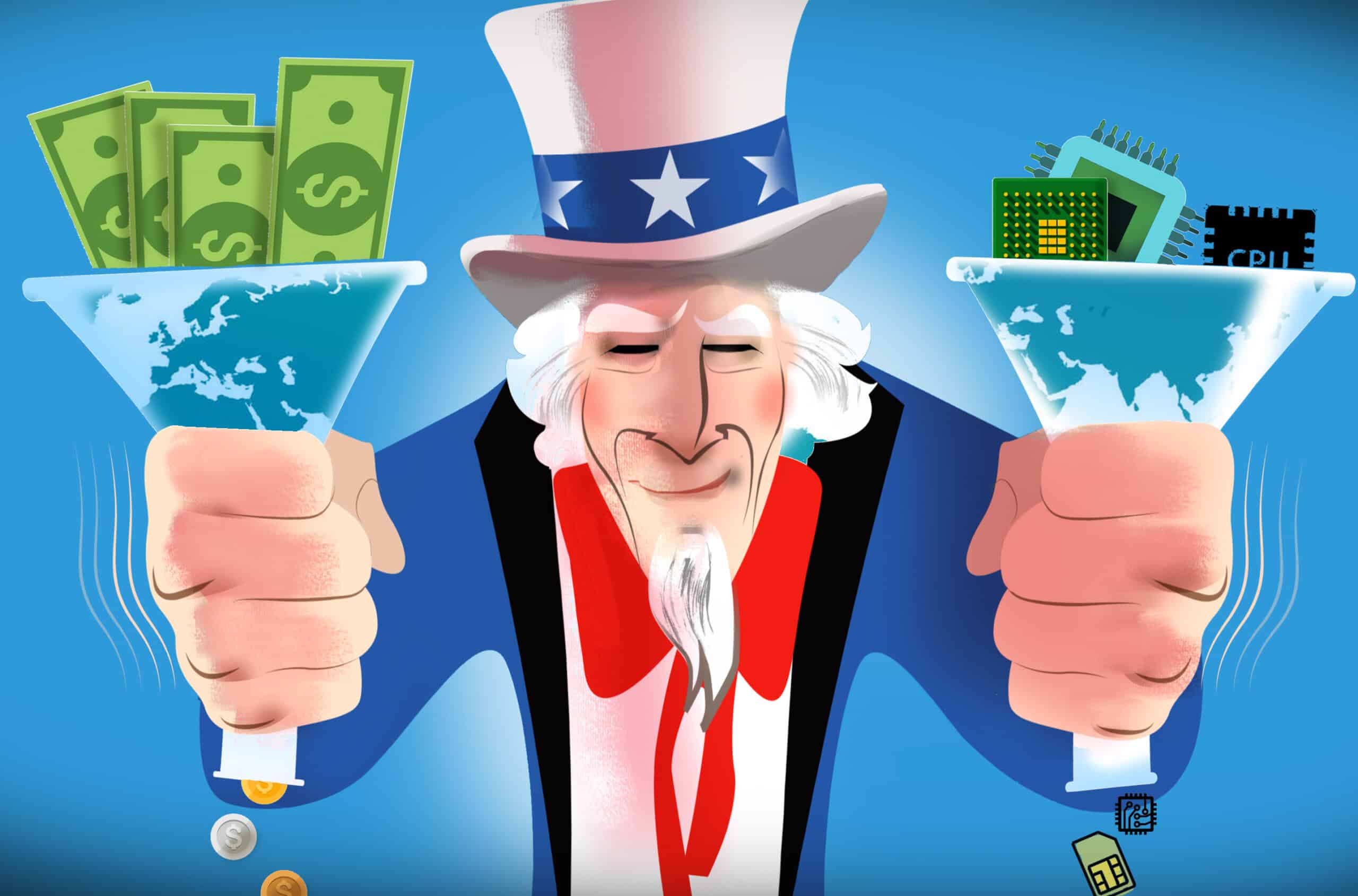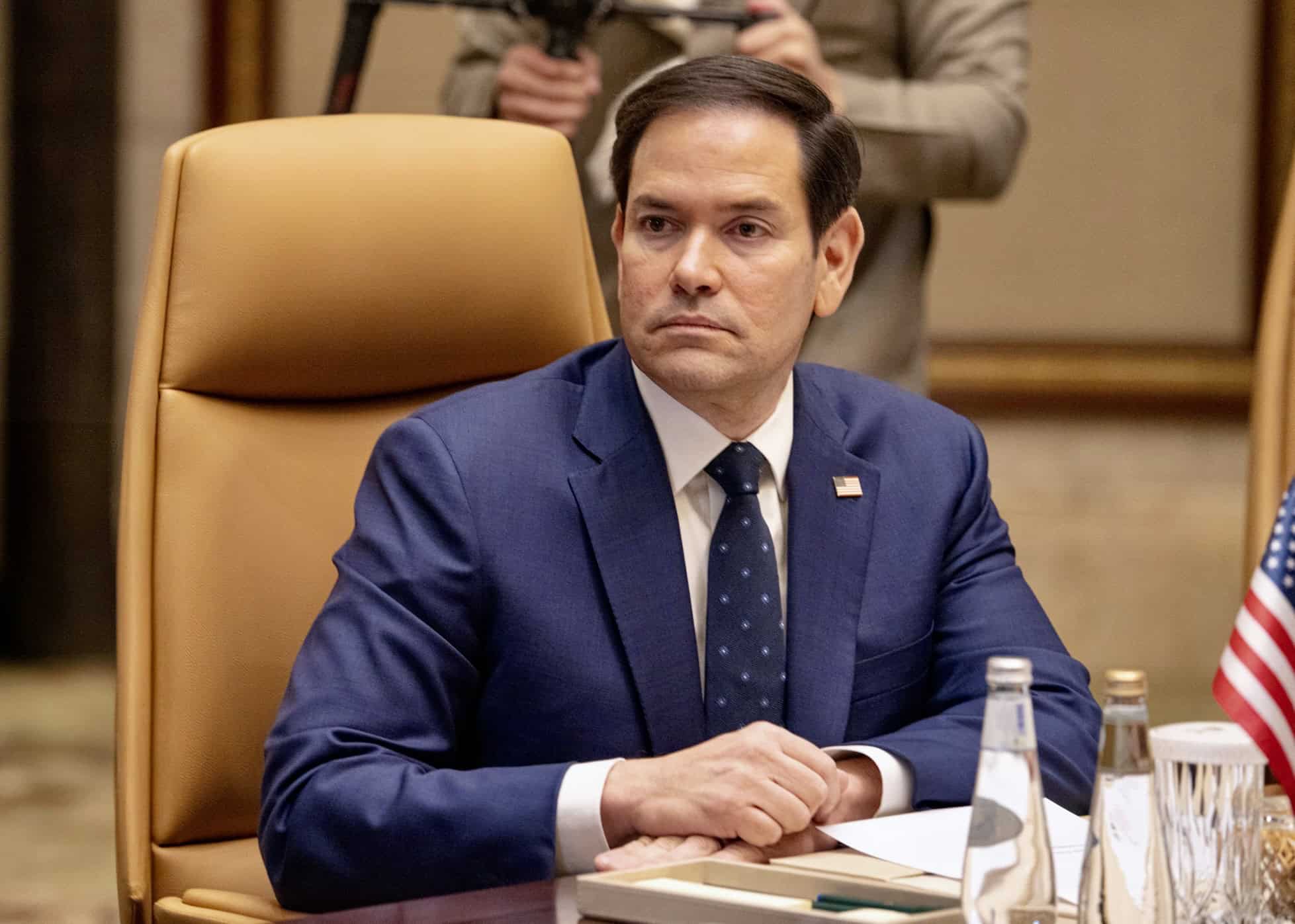In 2008, after a stint as a Global Governance Fellow at the Brookings Institution and while serving as a Senior Fellow at the think tank now known as New America, The New York Times Magazine published Parag Khanna’s essay, “Waving Goodbye to Hegemony,” a sweeping look at the end of the Cold War and the emergence of a new world order. It was an excerpt from his book, The Second World: Empires and Influence in the New Global Order (2008), and it helped him gain international acclaim as an analyst and thinker who grapples with the complex geopolitics of our time. Since then, Khanna, who was born in India, and grew up in the United Arab Emirates, New York and Germany, has published several other books, including most recently The Future is Asian: Commerce, Culture and Conflict in the 21st Century (2019). Khanna holds a PhD in international relations from the London School of Economics, and a bachelor’s and master’s degrees from the School of Foreign Service at Georgetown University. His work has been published in The Atlantic, Foreign Policy, Time, The Wall Street Journal and The Washington Post. What follows is a lightly edited Q&A with Khanna, who is based in Singapore.

Illustration by Kate Copeland
Much of your work has centered on the emergence of a multipolar, multi-civilizational world that began to take shape in recent decades. Can you take us back to that, and the origins of your first book, The Second World: Empires and Influence in the New Global Order?
Sure. Between 2003 and 2005, there was a body of work around America as a perpetual hyper power, because you had the 9/11 terrorist attacks and the U.S. moving to occupy Afghanistan and Iraq. People started talking about the return of global imperium — the idea that from the wayward 1990s, America was refocused on finding a new global mission, of America bestriding the world. There were only a couple of books emphasizing Europe as emerging as an independent pole of geopolitical power. I took that seriously. Most Americans didn’t take it seriously and still don’t.
Then came the literature on China. There were enough books at the time saying that China is not the next but an emerging superpower, and that we need to kind of watch this space. A lot of it focused, though, on the internal dynamics of China and the characteristics of the regime, not necessarily on the modes by which China exercises global influence. In the early 2000s, it wasn’t yet obvious that China was going to be the world’s largest economy. It wasn’t the number one trading partner of 126 countries. It obviously did not yet have a blue-water Navy. It didn’t even have its own aircraft carrier. It had not launched the Belt and Road initiative. So it was still an open question as to how China becomes a superpower. How does it go from being a regional power to a global power? We did not know the answer to that question because it hadn’t yet fully happened.
| BIO AT A GLANCE | |
|---|---|
| AGE | 42 |
| BIRTHPLACE | Kanpur, Uttar Pradesh, India |
| CURRENT POSITION | Founder & Managing Partner, FutureMap |
| FAMILY | Married to Ayesha Khanna; 2 children |
And that gets to my effort to reconcile the three separate domains: America is going to rule the world; Europe is going to be number one; China is going to be number one. We share one planet, so they can’t all be true at the same time. They’re either all true or none of them are true. And I took the view that they’re all true, they’re just not reflecting on the others as well as they should.
So, for me, the solution was to go everywhere but those countries. I wanted to explain who is winning the superpower race, by going to every country that’s not a superpower. So, I went to Eastern Europe and the former Soviet republics as well as the Middle East, South America, and Southeast Asia. I also spent time on the periphery of China, to tell the story. But the focus of my story was the “places in between,” to borrow Rory Stewart’s term.
And what did you find?
I found that we’ve been heading towards a multipolar and a multi-civilizational global system since the 1970s. In proper geopolitical scholarship, you date the beginning of the transition from American unipolarity towards multipolarity to the 1970s, not to the collapse of the Soviet Union. The fact that the Soviet Union was a superpower does not mean that it met all the tests of being a superpower. And so, you look to the 1970s, to the consolidation of the European Union and the rise of Japan to think about a world system that was moving beyond bipolar. Market concentration in the European Union and the power of Japan and the demographic potential of China were all indicating a multipolar world. We are very much in a multipolar and multi-civilizational global system the likes of which we have never experienced in world history.
Beijing, in your book, was one of the primary poles. Were you right about China’s role, or did you understate it?
Looking back, I actually may have overstated China. The irony is, of course, that I was writing about China prior to its full acceptance as a superpower. My overstatement was that I made the world tripolar, with Washington, Brussels and Beijing as three relatively coequal capitals. But the reason I wrote The Future Is Asian: Commerce, Conflict and Culture in the 21st Century (2019) is to correct my overemphasis on Chinese power and dominance in Asia. My principal motivation in writing the book was to say the future is Asian but not Chinese — China alone will not unilaterally dictate the future of Asia — and to explain what Asia has been for most of the last 4,000 years, which is multipolar. What we’re seeing today is a strong validation of that, which is, every action begets a reaction. Everything that China does to assert its hegemony is met with counter-reactions that actually undermine and weaken China’s overall influence.
Is that what we’re seeing with the Belt and Road Initiative?
Well, first, I’m a strong supporter of the Belt and Road Initiative. It is a major contributor to the broader priority of infrastructure finance in Eurasia, because most of the world’s population lives in Eurasia. In Asia, most of those countries are poor, post-colonial countries or post-Soviet republics. None of them have good infrastructure investment. Their populations have quadrupled over the last 50 to 75 years. So I’ve been an infrastructure finance champion.
But what you have had in the last three years is not something Beijing could not have predicted. This is something they got wrong. And we can get into whether or not China really does have a valid thousand-year plan or vision or whether it’s just winging it, like everyone else. But it’s very hard to predict what the real first-, second- or third-order reactions will be in something like the Belt and Road Initiative. Who could predict that five years after the launch, America would be creating a Blue Dot Network with Japan and Australia; that you’d have Europe launching an Asia connectivity initiative; or that in Japan you would have a partnership for sustainable infrastructure finance; or even that you would have Japan and India launching their connectivity corridors? We’ve got pretty much everyone out there trying to compete with Belt and Road in terms of loans, offering concessional finance and trying to dilute Chinese influence.
The reaction to China’s actions, the blowback to the empire, has happened. In European colonial times, it took three centuries; during America’s Cold War, it took three decades. But with China, it’s happened in three years. China does not have the luxury that Great Britain had in the 17th, 18th, 19th centuries, or that America had in the 20th century, which is a world that tolerated, even against its own will, the idea of divide and conquer. The calculus in Beijing was, let’s follow the playbook of the British East India Company and create debt traps. Or, let’s even take lessons from the Dutch Empire or the Portuguese Empire.
You have said, and written, that the world is being irreversibly Asianized? Can you explain?
It may seem counterintuitive for a Western reader, but the primary locus of Asianization is Asia itself. Since Asia contains most of the world population, the world becomes Asianized simply by Asia becoming more Asian. This means that the region becomes an ever more interdependent “system” as it’s known in theoretical jargon. This is occuring at many levels such as trade and finance, diplomacy and institutions, as well as cultural interactions. When people speak about the “new Silk Roads,” this is the deeper process that is underway.
The rest of the world is also being Asianized in that Asian influences — demographic, commercial, strategic, cultural — are all expanding as well. This is both the sum total of China, India, Japan, Korea, and other Asian powers globalizing their various vectors of engagement around the world, but also a collective Asian presence that is a whole greater than the sum of its parts.
| MISCELLANEA | |
|---|---|
| BOOK RECOMMENDATION | The Great Game by Peter Hopkirk |
| FAVORITE FILM | Syriana (2005) |
As I mentioned early in the book The Future Is Asian, I’ve been living and watching this Asianization unfold in many regions of the world over the past 40 years. It is not about Asia (or some notion of the “East”) displacing the West, but Asia adding a new layer of paint on the canvas of history that blends with the existing European and American layers.
You’ve also stressed that people have to understand Asia as a whole, and not just think of China when we talk about Asia. Can you elaborate?
In a way, people are focused too much on seeing everything from the standpoint of the U.S. versus China. No one cares unless it’s China, China, China. The most obvious example is this idea that China and America are carving up Southeast Asia. If I had a penny for every time I’ve heard someone say that America and China are carving up Southeast Asia, or that Asia is being forced to choose sides.
Even in Europe. I keep reading that everyone in the world is being asked to choose between the U.S. and China. It would be funny if the stakes weren’t so high and they weren’t so wrong. I happen to know a thing or two about Asia, and I do live in Asia, so I can safely say that we are blinded by this China-centric bias. Everyone is taking up this narrative. This is kind of just the “blob” approach to the world.
What is the reality on the ground?
The spirit of post-colonial countries is that these countries don’t want to be ruled by anyone ever again. Many countries are explicitly not choosing sides. We posit this notion that you must choose a side because that’s the way the world works, and that there are only two options on the table, because we’re literally too ignorant and too lazy to ignore this phenomenon of multi-alignment. That’s why I write books, because if you’re too lazy to go out and travel, then you’re gonna miss most of the story. We are ignoring what the reality is, and what these countries are doing because they’re not choosing sides. Multi-alignment is both a means and an end.
Can you give some concrete examples of this?
Let’s take a private sector example. This is one I saw a couple of years ago. General Motors decides to build a new automobile plant in Michigan, and that’s taken as a sign of near-shoring. And it’s page one of the Wall Street Journal. Then, a couple of weeks later, GM announces its new or expanded plant in China. That’s on page 16. Now, both happened. But as far as people in the analytical or think tank community know, only the first one happened. Now, let’s take high-speed rail projects. It’s a competition between China and Japan. If China wins the contract, it’s front-page news everywhere. It’s the new colonialism. It’s debt-trap diplomacy.
This is also playing out in the 5G or technology arms race. Again, every major social media company in this region is funded by either a Japanese or Indian or American or European venture capital fund, often all at the same time. What’s happening is that the winner is not America or China. The winners are countries practicing multi-alignment. They are taking money from all the sources, and acquiring the latest technology. They are strengthening their own data regulation so that their data is not immediately sucked up and off-shored to another country.
The great sociologist Ulrich Beck famously said of multinationals: the only thing worse than being overrun by globalization is not being overrun by globalization. To be considered an orphan and ignored by the international capital markets or technology investors sucks.

Courtesy of Parag Khanna
So, in the emerging markets, all these countries want to multi-align and also enjoy the fruits of competition between the leading powers, right?
Yes, you want to be the Philippines right now. You want to be Indonesia. You want to be an Indian tech company. You want people from all over the world bringing their money and offering joint ventures and partnerships and building research labs in your country. That’s exactly what you want. That’s the way in which your ecosystem accelerates. You are just a country that wants to have broadband faster, better and cheaper, because that’s all you can afford. And you’re thinking about this not as national security, geopolitical tug of war, or balance of power issues. You’re thinking about it from the standpoint of industrial development, modernization, economic diversification. If you’re a poor, Southeast Asian country, you should go with Huawei because it is faster, better, cheaper, and you are going to be able to modernize your economy more rapidly.
You seem to be now talking about what you call “peak China.” What is that?
Given the demographics and the debt, and the mounting of a blowback reaction to China’s rise, we might be at peak China. When you look at China from the Asian standpoint, or from a world historical or geopolitical standpoint, then the peak China hypothesis is quite plausible. Asian geopolitical dynamics are not like Western geopolitical dynamics in terms of rigid alliance systems, because there aren’t aligned systems at all in Asia and in Asian history. So, we can really talk about the World War I analogy. Because Asia has never operated that way. There is no “the enemy of my enemy is my friend.” It just shows our lack of knowledge of Asian dynamics that we resort to Eurocentric historical, irrelevant analogies.
I don’t want to talk about the balance of power, per se. I want to talk about chain reactions and counter-reactions. Those are the ones that I’ve studied closely. So, the ways in which India has blocked all mainland Chinese beneficial owners from investing in technology companies. The ways in which Australia and Kazakhstan and other countries are blocking Chinese investment in their utilities or any strategic sector. The way China and the United States undertake their investment restrictions. The five different multilateral coalitions on infrastructure finance that have emerged in the last three years to counter the Belt and Road. The deep suspicion of China around territorial policies and the South China Sea, or obviously with respect to its dispute with India. All of this in the last couple of years, constitute ways in which China’s actions are provoking even stronger counter-reactions and limiting China’s rise, or hampering its ability to achieve a linear goal of hegemony or unipolarity in Asia or beyond.
The Trump administration seems determined to contain and even destroy the Chinese Communist Party. What do you make of what is happening in the U.S., with nearly every major federal agency ramping up to defeat the so-called “China threat”?
There’s a lot wrapped up in there! The form that “ramping up to destroy China” actually takes looks much more like attempting greater near-shoring to strengthen the U.S. industrial base, building technological coalitions to compete with China in areas where it has become dominant (e.g., 5G and medical equipment), and reinforcing efforts to stand up to Chinese territorial expansionism (e.g., the “Quad”). So the reality — if these strategies are actually pursued in a rigorous and less ideological fashion — is much less fiery than the rhetoric. And, quite frankly, these are strategies that are smart and long overdue.
Is that “decoupling,” which is the new buzzword for what might be taking place between the U.S. and China?
First, we have to understand that the concept of decoupling itself is used in a quite limited way, usually applied to trade, supply chains and technology. Those are very important, but they are not the sum total of globalization. We should resist the tendency to hold decoupling and de-globalization as equal. Two countries such as the U.S. and China could diminish their trade volumes with each other while other globalization dyads and dimensions could be expanding. For example, digital-services trade has been booming even as commodities and goods trade has leveled or declined. Furthermore, European trade with Asia has been expanding and is far larger than either European or Asian trade with America. So it is quite frankly perverse to be sitting in America saying that “globalization is dead” when what has really happened is that the country has been reducing its own role in those arenas of globalization. Furthermore, it is China that initiated the decoupling, not the United States. China’s successive technology plans are all about import substitution, and the U.S. is belatedly waking up to that.
It’s also off the mark since, when it comes to financial globalization, American financial institutions are very keen to increase their exposure to China’s debt, equity and bond markets as the country liberalizes its capital accounts. As I like to remind people: Trade is billions, finance is trillions.
In general, you should not worry about globalization, only your role in it.

David Barboza is the co-founder and a staff writer at The Wire. Previously, he was a longtime business reporter and foreign correspondent at The New York Times. @DavidBarboza2




